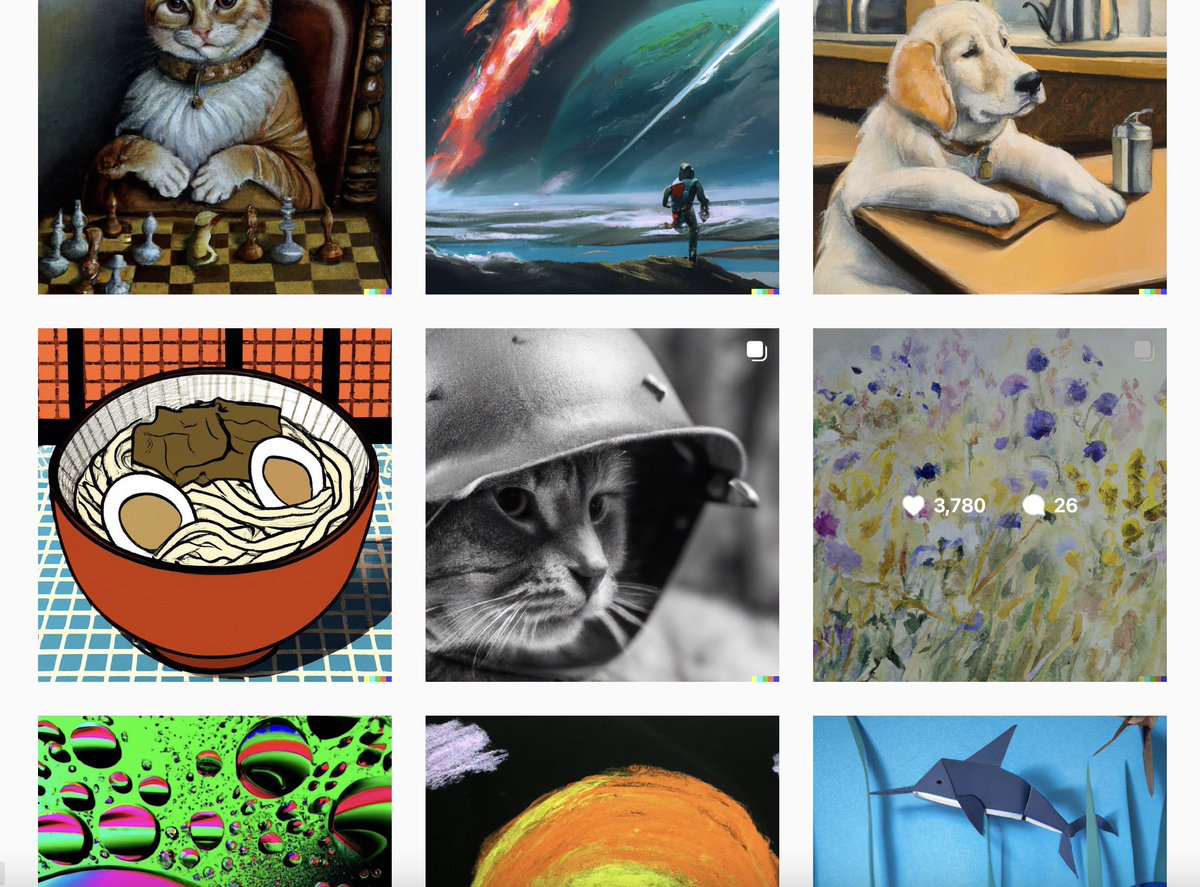
1. Text-based image editing is coming in hot!
Between #DALLE, #midjourney and #stablediffusion text-to-image generation is all the rage, but what if your images are off target?
Usually you try new prompts, then use inpainting to make edits... until now.
Between #DALLE, #midjourney and #stablediffusion text-to-image generation is all the rage, but what if your images are off target?
Usually you try new prompts, then use inpainting to make edits... until now.
https://twitter.com/krea_ai/status/1582483390392983552
2. This month multiple papers have come out demonstrating how language can be used to edit an image.
Equally exciting, these papers are being implemented on top of #stablediffusion since it's now openly available (Thanks @EMostaque!)
Let's review some of the ⚡️fast progress...
Equally exciting, these papers are being implemented on top of #stablediffusion since it's now openly available (Thanks @EMostaque!)
Let's review some of the ⚡️fast progress...
3. Last week, @FerranDeLaTorre and Chen Henry Wu released both a paper and code for CycleDiffusion.
CycleDiffusion allows existing text-to-image generation networks (e.g. #stablediffusion) to be used as text-guided image editors.
github.com/ChenWu98/cycle…
CycleDiffusion allows existing text-to-image generation networks (e.g. #stablediffusion) to be used as text-guided image editors.
https://twitter.com/_akhaliq/status/1580002416644263936
github.com/ChenWu98/cycle…
4. 6 days later, Google released Imagic, another text-based editing solution built on top of Imagen, Google's unreleased text-to-image model.
Amazingly, @Buntworthy was able to implement Imagic on top of #stablediffusion 1 day later (i.e. yesterday)!
Amazingly, @Buntworthy was able to implement Imagic on top of #stablediffusion 1 day later (i.e. yesterday)!
https://twitter.com/_akhaliq/status/1582175757153230849
5. To showcase Imagic in action, @Buntworthy edited a photo of Barack Obama using the phrase "A photo of Barack Obama smiling big grin".👇
Imagic takes ~5 minutes to run on an A100 GPU.
Imagic takes ~5 minutes to run on an A100 GPU.
https://twitter.com/Buntworthy/status/1582307817884889088
6. Encouragingly, @andrewb10687674 was able to produce a similar edit using CycleDiffusion👇, which ran in ~1 minute.
An baseline img2img result is also included on the right to remind us what we used to be impressive by way back in September.
An baseline img2img result is also included on the right to remind us what we used to be impressive by way back in September.
https://twitter.com/andrewb10687674/status/1582479603129466881
7. Both the Imagic and CycleDiffusion results look solid, but the Imagic code had the disadvantage of needing >24GB of RAM.
Horrible right? Fortunately, last night @shrivamshrirao got Imagic working well under the critical 16GB threshold. Hooray!
Horrible right? Fortunately, last night @shrivamshrirao got Imagic working well under the critical 16GB threshold. Hooray!
https://twitter.com/shivamshrirao/status/1582604961300779008
8. As a quick test of @shivamshiraro's notebook, we were able to breath a bit of life in to @eerac's infamous #deadeyes photo from our first tutorial way back in September.
This required a bit of trial and error. We'll follow up with tips once we actually know what we're doing.

This required a bit of trial and error. We'll follow up with tips once we actually know what we're doing.


9. Finally, if you had concerns that progress was about to stall, yet *another* text-based image paper was released yesterday by @GoogleAI
Naturally, the results look amazing, but at this point, we're too jaded to care.
Naturally, the results look amazing, but at this point, we're too jaded to care.
https://twitter.com/_akhaliq/status/1582532143884173312
10. So where is this all headed?
First, we're clearly about to see an explosion of image manipulation operations being implemented using language.
In addition to editing photos, for example, it's also possible to select regions of a photo using text.
First, we're clearly about to see an explosion of image manipulation operations being implemented using language.
In addition to editing photos, for example, it's also possible to select regions of a photo using text.
https://twitter.com/aifunhouse/status/1575190579536969736
11. To string image operations together, we're keeping an eye on startups like @krea_ai and @runwayml. Both have hinted at building conversational UIs for editing images and videos.
In 2021 this all seemed impossible, but a year later it's within reach!
In 2021 this all seemed impossible, but a year later it's within reach!
https://twitter.com/runwayml/status/1568220303808991232
12. So that's where this train is going.
The rapid pace of progress is well-aligned with @EMostaque's prediction earlier this week that AI-powered image generation will more-or-less be "solved" in 2023.
The rapid pace of progress is well-aligned with @EMostaque's prediction earlier this week that AI-powered image generation will more-or-less be "solved" in 2023.
https://twitter.com/EMostaque/status/1581867443936317446
13. Like this thread? Looking to spend more time talking to your computer and/or photo collection? We got you!
Follow @aifunhouse for more tutorials, explainers, explorations, and #AI fun.
If you enjoyed this thread, please like and share.👇
Follow @aifunhouse for more tutorials, explainers, explorations, and #AI fun.
If you enjoyed this thread, please like and share.👇
https://twitter.com/aifunhouse/status/1582787573780746240
• • •
Missing some Tweet in this thread? You can try to
force a refresh




















